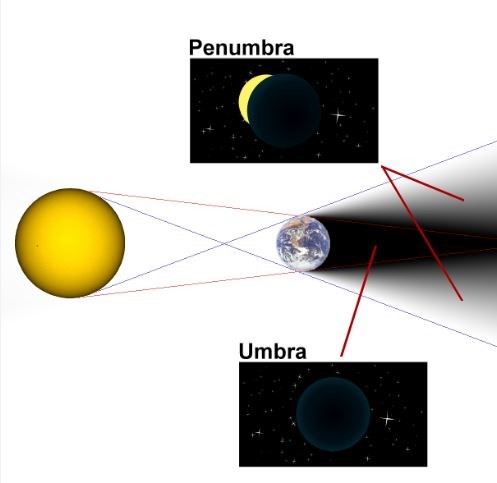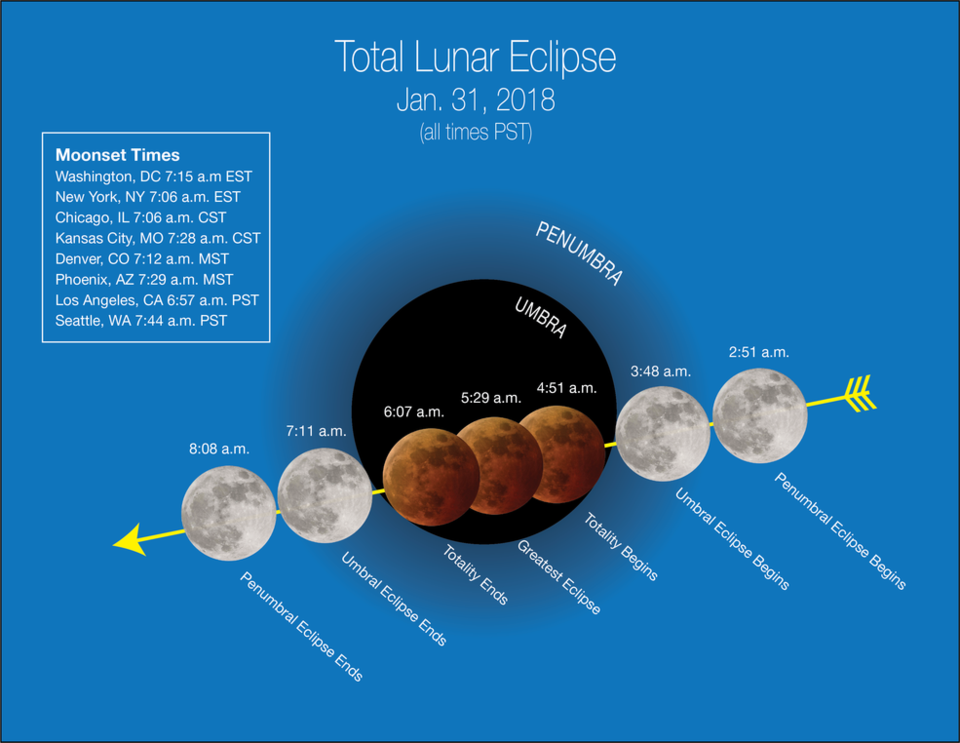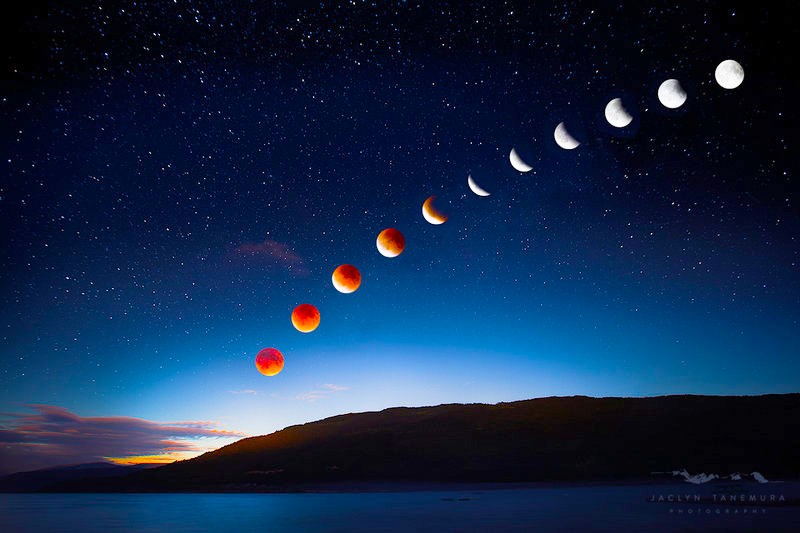Coming up tomorrow morning is a rare, lunar phenomenon: a “super blue blood moon.” This rare event is a combination of three circumstances together: a total lunar eclipse, a blue moon, and a supermoon (blood moon). "sometimes the celestial rhythms sync up just right to wow us.” NASA said.
Interestingly, even without the supermoon, this is the first time in over 150 years that a total lunar eclipse will coincide with a blue moon in North America, according to Space.com
Let’s begin with a basic understanding of the three terms. Firstly, a blue moon is a rare phenomenon, which occurs about every two-and-a-half years when two full moons happen in the same calendar month.
A total lunar eclipse happens when the moon passes completely into Earth’s shadow.
A supermoon happens when a full moon approximately coincides with the moon's perigee which it is closest to Earth. The moon appears 14 per cent larger and about 30 per cent brighter than usual, according to Space.com.
So, the “super blue blood moon” happens when a blue moon passes through Earth’s shadow, giving some viewers a total lunar eclipse and as it does so, the moon will turn a reddish hue meaning it is also a blood moon, according to NASA.

NASA said only certain regions can view the full eclipse around the world, including Canada. Viewers in western Canada will be treated to the total eclipse phase from start to finish, though the penumbral shadow (partial eclipse) will pass after the moon has set. The umbral eclipse (total eclipse) begins at 3:48 a.m. PT. At 4:51 a.m., totality will begin, with the best viewing between about 5:00 and 6:00 a.m. local time.

Eastern Canada will have a more difficult time to view since the sun rises at that time.
Time to view the lunar eclipse:
